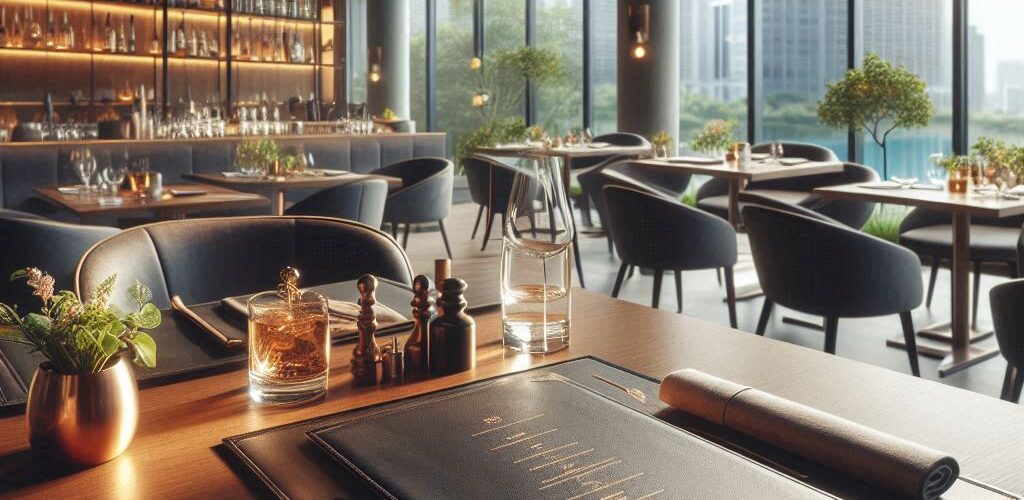Have you noticed how you approach the menu in a traditional restaurant compared to a modern one?
Traditional restaurants aim to attract customers with a wide variety of options. Their menu often resembles a thick booklet, requiring effort to navigate. It takes time, and not everyone has the patience to find the specialty the restaurant would like you to order.
Impatient customers often stick to their usual choices—goulash, bryndza dumplings, chicken broth, or fried cheese.
For me, the Pareto principle applies. In such restaurants, I always choose my typical 20% of dishes in 80% of cases.
Modern Restaurants
Unlike traditional ones, modern restaurants focus on a narrower selection. They have a clear segment and identity—Mexican? Vietnamese? Vegetarian? Steakhouse?
As a customer, your first choice is made with your feet—by picking the restaurant. The menu is shorter and clearer. The top dishes are more visible and, perhaps because you’ve chosen this specific restaurant, they seem more appealing. The menu typically features just a handful of dishes rather than dozens.
In such restaurants, I personally seek out new dishes in 80% of cases.
Why should this example make you think about your company, team, and products?
Product Inspirations
A broad menu offers many types of dishes, requiring numerous ingredients. To stay economically viable, you must predict demand very well. At the same time, you need to store a lot of inventory, keeping ingredients ready for immediate use. But how do you store them? Freeze them! And when needed? Thaw them—quickly, in a microwave! Problem solved!
However, quality drops, and the taste fades.
Moreover, maintaining a large stockpile is expensive—it occupies storage space and requires energy for refrigeration and maintenance. Money is literally frozen in inventory. If customers don’t order the right dishes, products start to spoil. To avoid losses, you might offer discounts since you’ve already invested in the ingredients and don’t want to waste them.
This leads to lower profits and might even prevent you from purchasing enough or high-quality ingredients in the future. Your menu shrinks, which increases the likelihood of disappointing customers who may have been looking forward to their favorite dishes.
On top of that, the chef must be capable of preparing everything—and quickly. Not every dish takes the same time to prepare, yet meals should be served simultaneously. This often results in stress, mistakes, losses, and ultimately impacts both quality and profit. And it’s no surprise when a dish is sent back to the kitchen.
Does this sound like your company’s situation with product development and delivery?
You will likely find at least some parallels.
This scenario reflects the impact of the seven types of waste, which apply to every type of human activity.
A large menu is essentially a metaphor for a large backlog filled with numerous items. It’s difficult to navigate, so you tend to pick only the items that are easy to choose from. Valuable items get lost in the sea of unnecessary ones.
Navigating such a backlog takes time. You may have already spent a lot of effort on the items, but they don’t get delivered quickly enough. They only get picked occasionally, and often too late. By then, the feature—like the food—has become outdated and needs redesigning to fit current customer needs, both in functionality and UX.
Our Daily Bias
What bias drives this approach to the Product Backlog? It’s the fear of losing ideas. This bias arises from a lack of future-oriented thinking. The fear of losing a potentially valuable idea in the future is known as loss aversion. People tend to avoid losses more strongly than they seek equivalent gains, leading to the hoarding of ideas that “might” become valuable.
The Impact
A large backlog slows down not just the Product Owner but, more importantly, the business itself. Valuable requirements aren’t being produced—only urgent ones.
Everything takes longer. More requirements are prepared in parallel, further delaying deliveries. The sheer volume of information causes overlooked details, leading to errors and rework. Sometimes, it becomes so late that requirements are abandoned despite being ready.
What Can You Do?
Simple:
- Revisit your company’s vision, business model, and strategy.
- Clarify who your customer is—this will limit the range of products and services you offer.
- Only then think about the ‘restaurant’—the product itself. Focus it around the intersection of the customer and company strategy. The product is the bridge connecting them.
- Finally, refine the ‘menu’—the backlog.
You want a concise menu. If you’ve followed steps 1-4, it will be.
- Remove everything older than three months from your backlog—those are the frozen ingredients.
- Check your delivery metrics. Be honest about your throughput and plan accordingly.
- Regularly trim the Product Backlog with your stakeholders—weekly.
Conclusion
A good restaurant continuously adapts its menu, for example, based on the season. A good product adapts its features continuously too.

